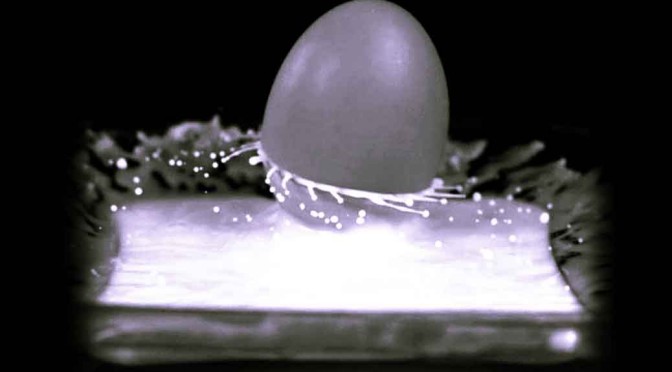By Anupum Pant
Background
Cracking an egg to check if it is boiled or not is not a very intelligent way. While many know that spinning an egg can be used to determine whether an egg is a boiled one or not, I’m amazed by the sheer number of people who aren’t still aware of this trick.
Just in case you are one of those who don’t know this, it works like this – try spinning an egg on a smooth surface. If it spins well and stands up vertically, it is a boiled egg. If it doesn’t spin properly, you can say that it isn’t cooked….as simple as that.
Tip: There’s a way to check if your eggs have gone bad without risking opening it up to take in the nasty stench. [Here]
Boiled Egg Sprinkler Experiment
Now that I’m sure you know about the boiled egg spinning trick I can tell you about this simple experiment you can do at home. Besides dealing with an angry mom, it carries no other risks.
Here’s what you do – Get some milk and pour it on the kitchen counter. Now, boil an egg if you don’t have a boiled one already. Make sure it is hard-boiled by doing the spinning test. Next, spin it on the milk puddle you created on the counter. Nasty mess ensues…
Yes, there sure is a mess afterwards. But something amazing happens when the egg spins on the milk puddle. When it spins, the egg first stands up and then the milk starts rising on the surface of the egg till it reaches the equator and then the milk gets sprinkled at the equator in a very beautiful manner. It’s like a skirt of milk. Different sprinkling effects can be obtained with different spinning speeds.
Until now, no one knew why this happened. The rotating egg would suck up milk like magic and create a fountain of milk. The exact physics part of it wasn’t known until some researchers at Brigham Young University decided to figure out why this happens. I, on the other hand didn’t even know this sprinkling thing could be done. Nice to know.
Turns out, there’s nothing peculiar about milk and eggs that creates this effect. The same thing can be done with an 8-ball or any other ball for that matter. On the other side, it works with other liquids too. For instance, if you use a liquid with a higher viscosity (glycerine and water mix), the rotating ball could create not just sprinkles, but whole sheets of liquid getting flicked off at the equator. Some times if the fluid is viscous enough and the ball is spinning fast enough, sheets spanning several feet can be seen getting flicked off the equator of the spinning balls! It’s like a motor.
Here is an amazing hi-speed video of this happening in the laboratory and the elegant physics behind has been explained too. Watch it here:
After having watched the explanation, I can say one thing for sure: There’d be no sprinkling if this was done on Superfluid Helium because superfluid helium would have no viscosity and it wouldn’t rotate with the ball!

